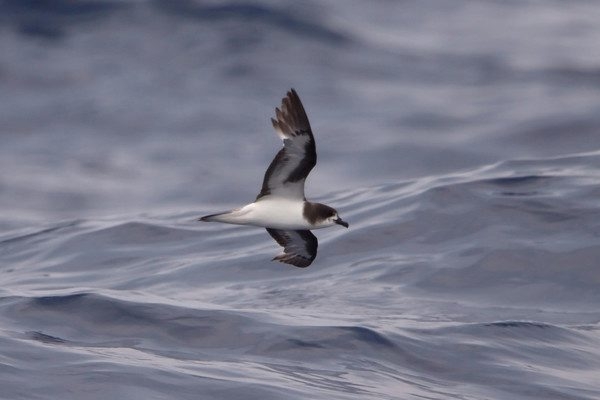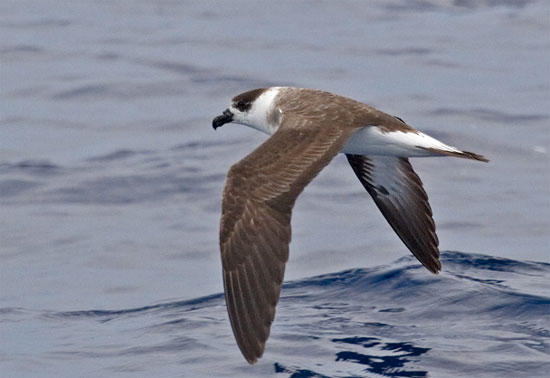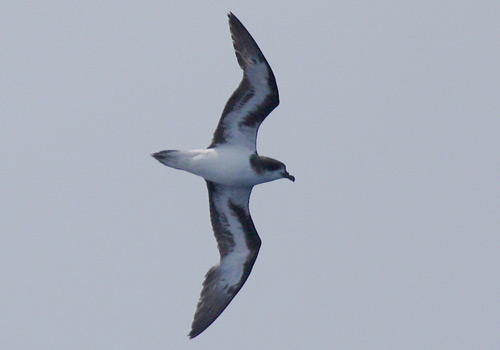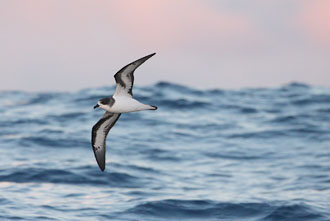
Pterodroma cahow
TAXONOMY
Aestrelata cahow Nichols and Mowbray, 1916, Castle Island,
Bermuda.
OTHER COMMON NAMES
English: Cahow; French: Pйtrel des Bermudes; German:
Bermudasturmvogel; Spanish: Petrel Cahow.
PHYSICAL CHARACTERISTICS
15.0 in (38 cm); wingspan 35.0 in (89 cm). Brownish-gray upper
body, including a cap that covers the eye and a partial
brown collar on the nape. Black bill. White underneath, except
for black edges of wings. Easily confused with the larger blackcapped
petrel.
DISTRIBUTION
Islets in Castle Harbour, Bermuda.
HABITAT
Marine. Formerly excavated burrows in sand or soft soils, but
now nests on small, rocky offshore islands and in artificial burrows.
BEHAVIOR
Little is known about the natural
BEHAVIOR
of these birds.
Their normal night-time aerial courtship has been disrupted by
lights from human facilities.
FEEDING ECOLOGY AND DIET
Very little known; not known to follow ships.
REPRODUCTIVE BIOLOGY
Breeding season January to June. The single white egg is incubated
for 51–54 days; the chick is brooded for one or two days;
fledging after 90–100 days. Historically it bred inland in soil
burrows, but rats have driven colonies to suboptimal, rocky
offshore islets.
CONSERVATION STATUS
Endangered. Had been thought extinct since 1621 after
colonists hunted it for food. In 1921, it was found living, and
in 1951, 18 breeding pairs were found. Intensive conservation
efforts began in 1961; 45 pairs were found breeding in 1994.
Current threats include native species (white-tailed tropicbirds
[Phaethon lepturus] compete for nesting sites), human disturbance
(light pollution disrupts nocturnal courtship), natural
disasters (flooding of nests became a problem in the 1990s,
with rising sea levels), and atmospheric pollution. In 1997, the
population was estimated at 180 birds.
SIGNIFICANCE TO HUMANS
Formerly hunted for food.
Other popular Animals
Photo Gallery of - Bermuda petrel




 Animalia Life
Animalia Life